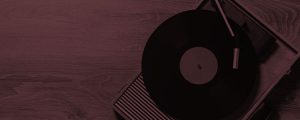
During the late 1980s, I ran a stall at the stables end of Camden Market on a Sunday with my brother Glen. It was simply a great time to be down there. I remember reading in an Evening Standard one Monday that a crowd of a quarter of a million people were estimated there on one Sunday afternoon and I would honestly say it felt like it some weeks.
We had to set up our pitch at 7am or lose it, but we’d both be battered from a Saturday evening out the night before. So by 11am, we’d be dying for a sausage sandwich or what have you.
Trouble was to get out from behind our stall however, was a mission. As they were all joined side by side, we had to go under it and emerge at its front. Only some afternoons, trying to find a gap between the thousands of legs walking in front of us, was nigh on impossible.
I was down there ten minutes one week…
When I finally emerged and made my way to the Lock area in search of some grub, I suddenly picked up the theme tune to the TV series ‘Mission Impossible’ floating in the air. I just loved that programme as a kid. Great stories, theme tune by Lalo Schifrin and of course they wore some tidy clobber in the early episodes.
I following this version, trying to track it down, and what I was now hearing was jazzier than I recalled. It was cracking along very nicely. I finally located its source from a record stall not far from The Electric Ballroom. I asked the ‘stallie’ who it was and he replied Jimmy Smith. I immediately handed over the tenner there and then that he was looking for, and walked away with the vinyl version of the album ‘Livin’ it Up’ from whence this tune came, instead of the sausage sarnies I’d gone out for…
Upon arriving home and playing the album, I discovered Jimmy’s Hammond organ, his instrument of choice, simply exploded with groovy lines on the LP, which weaved up on tune after tune after tune.
Now, I already knew Jimmy’s name from tracks like ‘The Cat’ and ‘The Carpet Baggers’ which was used on another TV show, namely ‘The Money Programme’ on the BBC. So I was ready for more.
The man himself was born James Oscar Smith in… well no one is too sure when to be honest, it could be in 1925 or 1928 depending on what you read.
We do know that he grew up in and around Pennsylvania and he was a performer with his father from the age of six, soft shoe shuffling around the club circuit.
He also began picking out tunes on the piano, teaching himself the instrument, and soon his boogie woogie style won him a radio talent show aged 9 and he was a very accomplished ‘stride’ player by 12.
He left school early to help provide for the family, and then he joined the navy aged just 15 before furthering his musical career and education on the ‘GI Bill’ at the Hamilton School of Music and the Ornstein School in Philadelphia, a few years later. The Hammond organ found him in 1951 and he switched full time to it in 1954 working in local R&B bands.
A major influence on his playing style was the work of Wild Bill Davis.
He bought his own Hammond and practised in a warehouse for a year before emerging and catching the ear of Blue Note jazz record label founder Alfred Lion who signed him up and he was quickly established as a major talent on the scene picking up the sobriquet ‘The Incredible Jimmy Smith.’
Appearances at Newport Jazz festival and legendary gigs at the Birdland jazz club in 1957 cemented the deal. There is no doubt that he certainly helped to popularise the sound of the B3 Hammond with its ‘Leslie’ speaker
He was a prolific recording artist for that most iconic label, with a run of fine albums over an eight-year period starting in 1956. Titles to check include ‘Home Cookin” ‘Midnight Special’ and ‘Prayer Meetin’
He transferred to Verve in ’62 and explored the big band sound there under the leadership of Oliver Nelson and then Lalo Schifrin which resulted in the hugely successful and commercial album ‘The Cat.’
Other titles that would follow, and that are worth investigating include ‘Got My Mojo Working’ ‘Who’s Afraid of Virginia Woolf’ and ‘Organ Grinder Swing.’
Over the years he played with many of the jazz greats in the US, with the likes of Wes Montgomery, Kenny Burrell, early George Benson, Grant Green, Grady Tate and Lee Morgan among them.
The 70s saw him tiring of the road and he opened his own club in North Hollywood. It lasted a couple of years but closed as his star began to wane though his 1972 album ‘Root Down’ proved to be a major influence of the hip hop generation to come including the Beastie Boys.
He was ‘rediscovered’ in the 80s and ended up working with Sinatra, and Quincy Jones (he can be heard on the ‘Bad’ album by Michael Jackson, which Q produced) and in 2001 he recorded his last album ‘Dot Come Blues’ with Etta James, BB King and Dr John.
He continued to perform in small clubs and on the festival circuit up until his death of natural causes in 2004.
The Mumper of SE5


